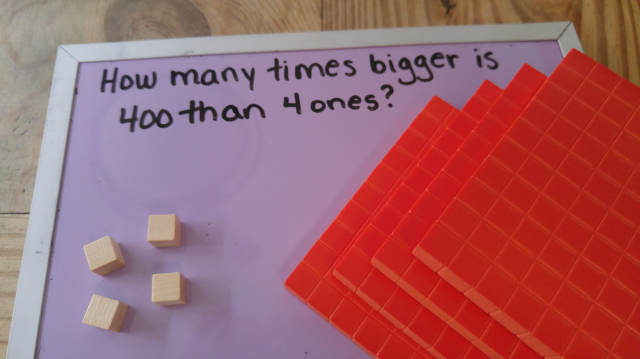Are you looking for some great place value activities for your classroom! Let me share 5 of my favorites today!
1. Place Value using Task Cards: These task cards are perfect for reading 3 and 4 digit numbers!


I am not sure when I learned how to write numbers in expanded notation, but I am certain it was not in 3rd grade. Students now are expected to learn how to write numbers in expanded notation as early as 3rd grade here in Texas and I am sure that applies to other states as well. But why? It is part of a push to help students understand the relationships between places and digits in our base ten number system. It can seem difficult at times, but with hands on activities and a lot of practice, your students can master expanded notation.
One method I find to be very effective is using play money:
Give your students a number. Guide them to use their play value money to model the number.

Then ask them “Ask “How many hundred thousands?” Tell “Expanded notation shows the number in each place times the value of the place, so 3 hundred thousands is 3 x 100,000.”

Continue questioning and guiding students to use play money to help them write the numbers.
You can download my play money for FREE by clicking the picture above.
For more great place value ideas, check out my Place Value Board on Pinterest!
I like place value blocks. They are a great concrete model for helping students to understand the relationship between ones, tens, hundreds and thousands. Students can count the blocks and set them side by side to see that ten ones is the same as one hundred or that one hundred tens is equal to one thousand. I also think it is important to use other examples for students to find meaning in the base ten system. In early grades we see students bundling straws and or popsicle sticks to learn grouping in tens and hundreds. A lot of teachers have students bring in objects to count on the hundredth day of school and sort them into groups of ten to see the relationship between ones, tens, and hundreds. These are terrific! But … what about older students? What about the relationships in the thousands, millions, billions?
For years I used blocks to teach and review base ten from ones through one thousands and then showed the students the patterns on the place value chart. One year I borrowed thousands cubes from other teachers to show my students a concrete example of ten thousand. (It was tall). This is a great concrete example for a lot of the students, and I still use the blocks (see my blocks post here). But not for all. So, what other models can we use with older students?

Money! Yup! Students seem to like talking about and playing with money! So I started using that play money from my manipulatives kit to help students see that the relationship between place values isn’t always about size, sometimes it is about WORTH (value)! So I took the fives out and we would use the play money to practice trading 10 ones for a ten, 10 tens for a hundred. And then I showed how that pattern repeats on the place value chart. Works great! But … most sets of play money don’t have the bigger bills … so … I made my own play money!
Now I have bills from the ones to the millions! I had a student ask me last week when we were working on this if there was really such a thing as a ten thousand dollar bill. I told her I wasn’t sure, but maybe we could research money to see what kind of bills the US Mint makes! Maybe I will have time to do that tomorrow! 😊
Understanding place value is an important Math skill for elementary students. One of the objectives is for students to describe the relationship between places in a base ten system. Although this may seem difficult at first, starting with concrete manipulatives can really help students gain a deeper understanding.

I like to start by letting students “play” with the blocks for a few minutes. Then I will ask specific questions and have them use the blocks to work out answers. One such example is “How many ones do you need to equal a ten?” or “How many tens can you use to make one hundred?” Give students time to work together or independently with the blocks to answer the question, then discuss. I also like to write the questions/answers on the board or have a record sheet for them to work along with. Continue reading
I am excited to be joining many teachers in the TpT Best Year Ever Sale! My entire store will be on sale for 20% off! For additional savings type in the code BESTYEAR at checkout to get up to 28% off!

Have you ever had a student who seemed to understand place value initially, but then when questions were asked just a little differently couldn’t really answer correctly? Younger students need a lot of hands on practice and a lot of discussions before moving on to pictorial and abstract. What about middle and upper elementary? As the learning targets get higher and the numbers get bigger, most students need to revisit basic place value concepts with hands on experiences and discussions to build or review understanding before moving on to bigger numbers. Continue reading
 Who doesn’t love a shamrock and a pot of gold? St. Patty’s Day can be a lot of fun! And why wait until March 17th? You can start now with these engaging resources! Continue reading
Who doesn’t love a shamrock and a pot of gold? St. Patty’s Day can be a lot of fun! And why wait until March 17th? You can start now with these engaging resources! Continue reading